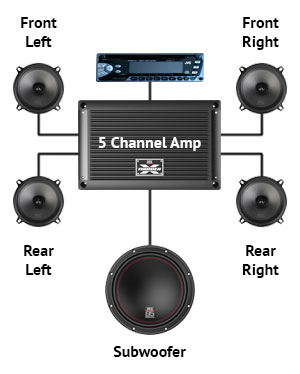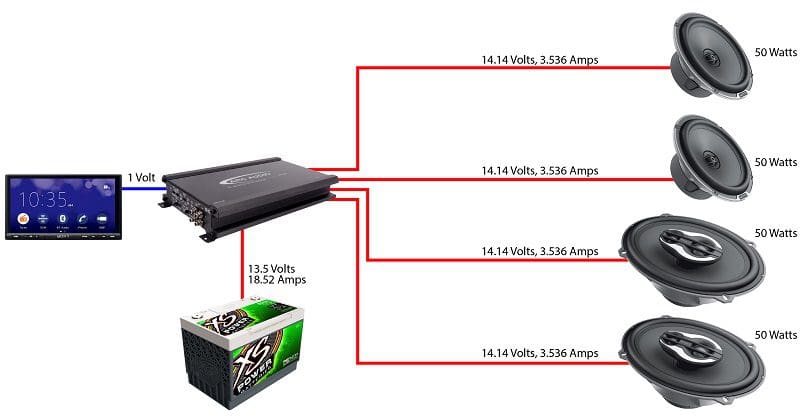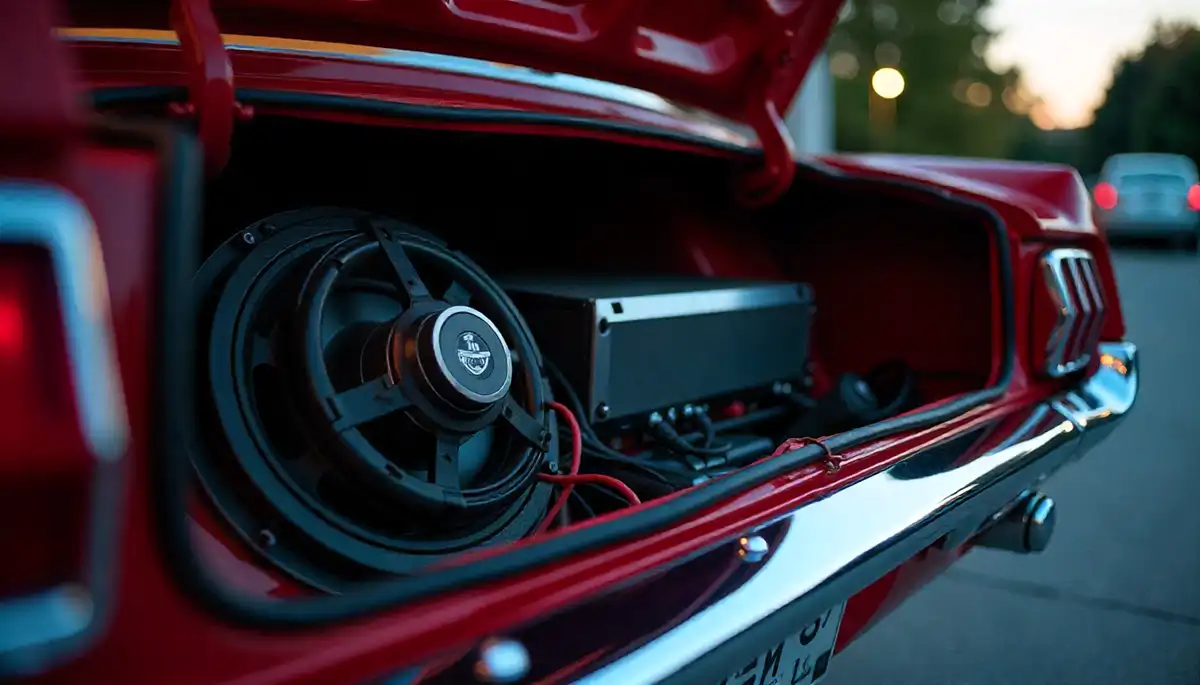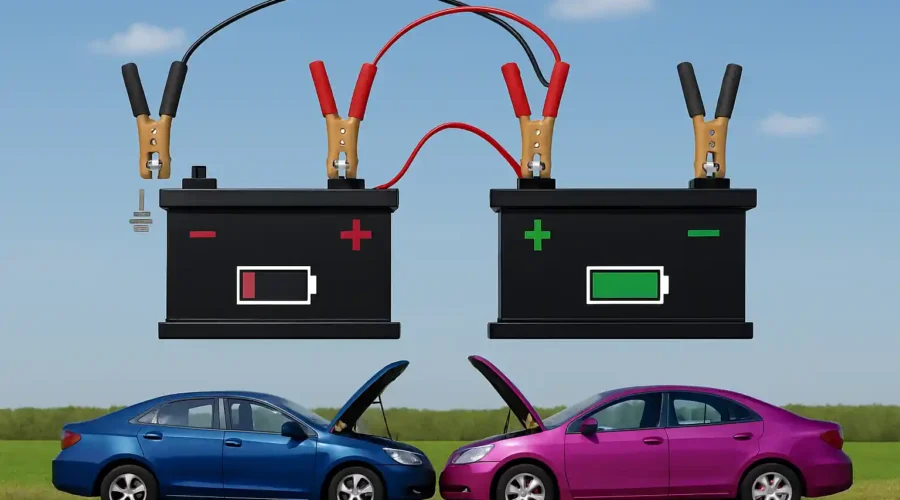Choosing the right amplifier for car speakers can significantly enhance your driving experience. Consider this: a well-paired amplifier can create sound clarity so precise, it feels like a personal concert on wheels. Crafting the perfect car audio setup is an art that starts with understanding power ratings and speaker compatibility.
Historically, choosing an amplifier was a daunting task due to limited options and complex specifications. Today, amplifiers are designed to match specific car speaker systems, making the choice more straightforward. Statistically, pairing the correct amplifier with your speakers can extend their lifespan by 20% and dramatically improve sound quality.
- Understand the types of amplifiers available, such as Class D and Class AB.
- Match the amplifier’s RMS power rating with your speakers’ RMS power rating.
- Consider the speaker impedance and ensure compatibility with the amplifier.
- Determine the number of channels needed for your audio setup.
- Evaluate additional features like built-in crossovers and signal-to-noise ratio (SNR).
- Set a budget that balances quality with affordability.

How to Choose an Amplifier for Car Speakers
Choosing the right amplifier for your car speakers can be quite rewarding. The first step is to understand the different types of amplifiers available. Class D and Class AB amplifiers, for example, have distinct characteristics. Class D amplifiers are more efficient and compact. Class AB amplifiers, however, often provide better sound quality.
Next, you need to match the amplifier with your speakers’ specifications. Check the RMS power handling of your speakers and ensure the amp’s wattage aligns with it. Matching amp wattage to your car speaker RMS is crucial. This not only prevents damage but also ensures peak performance. Additionally, consider the speaker impedance and select an amp that can handle it.
Consider how many channels you need your amplifier to have. If you’re only powering a set of speakers, a two-channel amplifier should suffice. For a more complex setup, like adding a subwoofer, you might need a multi-channel or bridgeable amplifier. Pay attention to the amplifier’s bridging capability. This allows you to combine channels for more power.
Lastly, look at other features that could enhance your car audio system. High-pass and low-pass filters help refine the sound quality. Preamp outputs and built-in EQ controls add more customization options. Don’t forget about the installation process. An amplifier that’s easy to install and fits well in your car can save a lot of hassle.
Picking a Car Audio Amplifier – DO’s \u0026 DONT’s
Step #1: Understand the Types of Amplifiers
Understanding the types of amplifiers is the first step in enhancing your car audio system. The two main types are Class D and Class AB. Class D amplifiers are known for their efficiency and compact size. They generate less heat and are great for small spaces. This makes them ideal for modern car installations.
Class AB amplifiers, on the other hand, offer superior sound quality. They are often used in high-fidelity car audio systems. These amplifiers combine the efficiency of Class A and the performance of Class B. Although they are larger and produce more heat, many audiophiles prefer them for their clarity. This choice depends on one’s priority between quality and space.
A key difference between these amplifiers is their design and functionality. Class D amplifiers use switching technology to amplify signals. This makes them more energy-efficient. On the contrary, Class AB amplifiers use linear amplification. This often results in better sound reproduction but at the cost of more power consumption.
When selecting an amplifier, it’s crucial to consider your car’s specific audio needs. Evaluating the pros and cons of each type can help you make an informed choice. Whether you prioritize sound quality or compact design, understanding these features will guide you. Additionally, considering your budget and installation space is essential. This ensures a balanced decision for your car audio system.
Step #2: Match the Amplifier with Your Car Speakers’ Specifications
Matching the amplifier with your car speakers’ specifications is essential for optimal performance. Start by checking the RMS power rating of your speakers. This rating tells you the continuous power the speaker can handle. Then, match this with the RMS power of the amplifier. Ensuring they align prevents damage and maintains sound quality.
Speaker impedance is another critical factor. Impedance is measured in ohms and impacts how much power the speaker requires. Most car speakers have an impedance of 2 or 4 ohms. Ensure your amplifier can support the impedance level of your speakers. Mismatched impedance can lead to poor performance or even equipment failure.
Consider the total harmonic distortion (THD) rating of the amplifier, too. A lower THD means better sound quality. Check for an amplifier with a THD rating below 1%. This ensures cleaner and crisper audio output. It’s especially important if you’re an audiophile seeking high fidelity sound.
Additionally, evaluate the signal-to-noise ratio (SNR) of the amplifier. A higher SNR indicates a clearer signal with less background noise. Look for an SNR of at least 75 dB. This will provide a more enjoyable listening experience. Combining these factors ensures you select an amplifier that enhances your car audio system effectively.
Step #3: Consider the Power Output Required
When selecting an amplifier, power output is crucial. The power output needs to match your speakers for the best performance. RMS (Root Mean Square) rating is the key indicator. It reflects the continuous power an amplifier can deliver. Ensure the amplifier’s RMS power matches or slightly exceeds your speakers’ RMS rating.
Overpowering your speakers can cause damage. However, an underpowered amplifier may introduce distortion. Balancing power is essential. For example, if your speakers have an RMS of 100 watts, look for an amplifier between 100-150 watts RMS. Matching these specifications ensures safe and efficient performance.
Another factor to consider is the amplifier’s peak power rating. Peak power indicates the maximum power an amplifier can provide in short bursts. While not as critical as the RMS rating, it still matters. Choose an amplifier with a peak power slightly above your speaker’s capacity. This helps in handling dynamic sound spikes.
When evaluating power, it’s also essential to consider the total harmonic distortion (THD). A lower THD means cleaner sound. Ensure the amplifier’s THD is below 1% for excellent audio quality. This will help maintain the integrity of the sound, especially at high volumes.
Finally, look at the amplifier’s efficiency. Class D amplifiers are often more efficient than Class AB amplifiers. This means less power is wasted as heat, and more is used to drive the speakers. High efficiency can be particularly important if you have limited power supply in your vehicle. This ensures you get the best sound quality without overloading your car’s electrical system.
Step #4: Analyze the Number of Channels Needed
Determining the number of channels your amplifier needs is a vital step. Channels refer to the separate audio signals a single amplifier can handle. A two-channel amplifier is typically used for a simple front-stage setup. For a more complex system with front, rear, and subwoofer, a multi-channel amplifier is ideal. This gives you more flexibility in your audio setup.
For example, a four-channel amplifier is perfect for a full-range system. It can power four speakers, giving clear sound distribution throughout the vehicle. If you have a subwoofer, consider getting a separate mono-channel amplifier. This ensures dedicated power to the subwoofer for those deep bass notes. Combining different amplifiers can create a balanced audio system.
Bridgeable amplifiers offer versatility. They allow two channels to combine into one more powerful channel. This feature is useful if you later decide to upgrade with a subwoofer. Bridging increases power output, enhancing overall sound quality. Check your amplifier’s manual to see if bridging is supported.
Matching the channels to your speaker setup involves planning. Make a list of all the speakers and subwoofers you plan to install. This helps in deciding how many channels your amplifier should have. Keep future upgrades in mind. It’s better to have extra channels than to completely replace an amplifier later.
Consider the convenience of installation and space availability in your car. Multi-channel amplifiers can save space and simplify wiring. They reduce the number of devices you need to install. However, for highly customized systems, using multiple amplifiers might be the best solution. It all depends on your specific audio requirements and installation constraints.
Step #5: Look into Amplifier Classes and Their Impact on Sound Quality
Amplifier classes significantly impact sound quality. The most common classes in car audio are Class D and Class AB. Class D amplifiers are known for being efficient and compact. They use digital switching, which creates less heat. This efficiency is ideal for limited car space.
Class AB amplifiers are often chosen for their sound quality. They combine the benefits of Class A and Class B designs. Class AB amplifiers provide more accurate sound reproduction. However, they generate more heat and are less efficient. This makes them larger, but many prefer their clear and detailed audio.
Class D amplifiers are perfect for powering subwoofers. They deliver high power without taking up much space. This makes them a popular choice in car audio setups. On the other hand, Class AB amplifiers are generally used for full-range speakers. This combination offers a balanced audio experience.
When choosing an amplifier, consider your car’s cooling system. Class AB amplifiers need more ventilation due to the heat they produce. Ensure that they are placed in well-ventilated areas. In contrast, Class D amplifiers are more forgiving with placement. This flexibility can simplify the installation process.
Lastly, think about your personal sound preferences. If you prioritize efficiency and space, Class D is the way to go. For audiophiles who seek crisp and accurate sounds, Class AB is often better. Knowing these differences helps you make an informed decision. It ensures your car audio system sounds its best.
Step #6: Determine Your Budget for Amplifier Purchase
Determining your budget for an amplifier purchase involves several considerations. First, evaluate what you need the amplifier to do. If you only need to power a couple of speakers, a basic model may suffice. However, if you’re looking to create a high-quality sound system with multiple components, invest in a higher-end model. Balance your needs and wants with your budget constraints.
Consider the costs associated with different amplifier classes. Class D amplifiers are typically less expensive than Class AB amplifiers. This is due to their efficiency and simpler design. However, Class AB amplifiers can offer superior sound quality which might justify the extra expense for audiophiles. Weighing these factors can help allocate funds effectively.
Your car’s specific audio requirements should also guide your budget planning. Determine if you’ll need additional features such as built-in crossovers or equalizers. These features can increase the cost but might save money overall by reducing the number of external devices needed. List these necessary features to avoid overspending on unnecessary extras.
Always keep an eye out for deals and discounts from reliable brands like Alpine, Kenwood, and Pioneer. Look at customer reviews and expert opinions before making a final decision. Trusted brands often provide better reliability and warranty options, giving peace of mind with your investment. This ensures you get good value for your money while meeting quality standards.
Don’t forget about installation costs when budgeting for an amplifier purchase. Some amplifiers are easier to install yourself, saving money on professional fees. Conversely, complex systems might require expert installation which could be costly but ensure it’s done correctly. Ensuring all these financial aspects will lead you to make informed decisions in crafting your ideal car audio setup within your budget limits.
Key Features to Look for When Choosing an Amplifier
When choosing an amplifier for your car speakers, several key features can enhance your audio experience. First, pay attention to the RMS power rating. This rating indicates the continuous power the amplifier can deliver. Matching this to your speakers’ RMS rating ensures optimal performance. Overloading can damage the speakers while underpowering can lead to poor sound quality.
Another important feature is the amplifier’s impedance compatibility. Most car speakers have an impedance of 2 or 4 ohms. Ensure your amplifier can support these levels. Mismatched impedance can lead to inefficient performance or even damage. Checking compatibility helps maintain a balance in sound quality and longevity of your system.
Look for built-in crossover options in your amplifier. Crossovers separate audio frequencies, sending them to the suitable speaker components. They ensure that each speaker receives only the frequencies it can handle. This not only improves overall sound quality but also extends the lifespan of your speakers. This feature is especially useful for complex audio setups.
A high signal-to-noise ratio (SNR) is crucial for clear sound. An SNR of at least 75 dB is recommended. It indicates that the amplifier produces more signal than noise, resulting in cleaner audio. This feature is essential for audiophiles seeking high fidelity sound. Always check the SNR rating before purchasing an amplifier.
Consider whether the amplifier has adequate cooling mechanisms. Amplifiers generate heat during operation, and without proper cooling, this can affect performance. Features like built-in fans or heat sinks help in maintaining a steady temperature. This ensures the amplifier runs efficiently and has a longer lifespan.
Finally, portability and ease of installation are significant factors. Compact design and easy-to-follow installation guides can save time and effort. Choose amplifiers that come with clear instructions and necessary mounting hardware. This makes setting up the system more straightforward, ensuring you enjoy your improved car audio system without hassle.
The Role of Impedance in Selecting an Amplifier
Impedance plays a crucial role in selecting the right amplifier for your car audio system. Impedance, measured in ohms, represents the resistance a speaker offers to the audio signal. Most car speakers have an impedance of 2 or 4 ohms. Matching the amplifier’s output impedance with the speakers is essential. This ensures efficient performance and avoids potential damage.
Using an amplifier that doesn’t match the speaker’s impedance can lead to various problems. For instance, if the impedance is too high, the amplifier might not provide enough power. This results in weak and distorted sound. Conversely, if the impedance is too low, it can overwork the amplifier. This might cause overheating or even permanent damage.
Many amplifiers are designed to handle multiple impedance levels. These models provide flexibility in different audio system setups. Check the amplifier specifications to see the supported impedance range. This information is crucial when planning your car audio system. It ensures compatibility and longevity for both the amplifier and speakers.
Understanding impedance helps in designing a balanced audio system. It’s important to consider the combined impedance when connecting multiple speakers. Using series or parallel wiring techniques affects the total impedance load on the amplifier. Proper planning avoids issues with power distribution. This maximizes the efficiency and sound quality of your setup.
Furthermore, some amplifiers feature adjustable impedance settings. These models allow you to fine-tune the system according to your needs. They provide greater control over how the speakers and amplifier interact. This feature is especially useful for custom audio installations. It offers the flexibility needed for high-performance sound systems.
Advantages of Having a Dedicated Amplifier in Your Car Audio System
Adding a dedicated amplifier to your car audio system has several benefits. One significant advantage is enhanced sound quality. Amplifiers provide clearer and louder audio. They produce less distortion even at higher volumes. This makes for a better listening experience.
A dedicated amplifier allows for more powerful bass. Car head units often lack sufficient power to drive subwoofers. An amplifier provides the necessary boost. This results in deeper, richer bass tones. Enthusiasts can enjoy a more immersive audio experience.
This setup also offers greater control over your audio system. With an amplifier, you can fine-tune sound settings. Many models come with built-in crossovers. These allow for precise frequency adjustments. Tailoring the sound to your liking becomes easier.
Amplifiers can also power more speakers. If you want a multi-speaker setup, a dedicated amp is necessary. It ensures each speaker receives ample power. This setup distributes sound evenly throughout the car. Achieving high-quality surround sound becomes possible.
Finally, having a dedicated amplifier ensures reliability. Using an underpowered head unit can strain the system. This might lead to overheating or early component failure. An amplifier designed for your car’s needs offers stable performance. Your audio system lasts longer with consistent quality.
Installation Tips for Car Amplifiers
Installing a car amplifier can greatly enhance your audio system. First, choose a location with enough ventilation. Amplifiers generate heat, so place them where air can circulate freely. Avoid cramped spaces that might overheat the unit. Common locations include under a seat or in the trunk.
Ensuring a secure and clean power connection is crucial. Use an appropriate gauge wire to connect the amplifier to the battery. The wire gauge depends on the amplifier’s power requirements. Secure the wire with a fuse close to the battery. This safety measure protects against electrical shorts.
Next, focus on grounding the amplifier properly. A good ground can prevent noise interference. Attach the ground wire to a clean, unpainted metal surface. Keep it short to maintain a strong connection. This helps in achieving clear and consistent audio output.
When running RCA cables, keep them separate from power wires. This avoids unwanted noise and interference in your sound system. Route these cables through different sides of the car, if possible. Proper cable management simplifies troubleshooting and enhances sound quality. Use zip ties to manage and secure all wiring neatly.
Check all connections once the amplifier is mounted and wired. Ensure the power, ground, and remote turn-on wires are secure. Inspect speaker connections to avoid loose wires. Thoroughly check for any short circuits before powering up. Proper installation ensures the longevity and performance of both the amplifier and your car audio system.
Common Mistakes to Avoid When Buying Car Amplifiers
When buying car amplifiers, one common mistake is not matching the amplifier’s power capacity with the speakers. If the amplifier is too powerful, it can damage the speakers. Conversely, an underpowered amplifier can cause distortion. Always check the RMS power rating and ensure they are compatible. Proper matching enhances performance and durability.
Another mistake is ignoring the importance of impedance. Impedance mismatch can lead to inefficient performance and possible damage. Take note of your speaker’s impedance, usually 2 or 4 ohms. Then, select an amplifier that supports this impedance. This ensures stable and high-quality sound output.
Many buyers overlook the need for proper ventilation in amplifiers. Amplifiers produce heat and need good airflow. Placing them in cramped or enclosed spaces can cause overheating. Always choose a location with adequate ventilation. This helps in maintaining the amplifier’s performance and longevity.
Some buyers are tempted by amplifiers with fancy features but forget the basics. Ensure the amplifier has a good signal-to-noise ratio (SNR) and low total harmonic distortion (THD). These factors significantly affect sound quality. Don’t be swayed by unnecessary add-ons. Prioritize fundamental specifications for the best audio experience.
Finally, neglecting to check customer reviews and expert opinions can lead to poor choices. Reviews provide insights into the reliability and performance of the amplifier. Trusted brands with positive feedback are usually safer bets. Spend some time researching before making a decision. This helps avoid costly mistakes and ensures a satisfying purchase.
Top Brands in Car Audio Amplifiers
Choosing the right brand for your car audio amplifier can make a big difference in sound quality and reliability. Alpine is one of the top names in the market. Known for their durable and high-quality products, Alpine amplifiers offer excellent sound clarity. They provide a range of models to fit various budgets. This makes them a popular choice among car audio enthusiasts.
Another reputable brand is Kenwood. Kenwood amplifiers are celebrated for their efficiency and compact designs. They offer both Class D and Class AB models. Kenwood amplifiers also come with advanced features like built-in crossovers and high signal-to-noise ratios. These features ensure rich, clear sound reproduction.
Pioneer is also a key player in the car audio world. This brand is known for its innovation and advanced technology. Pioneer amplifiers often include unique features like adjustable bass boost and various input options. They are highly reliable and offer long-term performance. This makes them a trusted brand for many car audio systems.
JL Audio focuses on premium-quality amplifiers. They are renowned for their superior sound quality and robust build. JL Audio amplifiers often come with high power ratings and low distortion. They are ideal for those looking to set up high-end car audio systems. Their reputation for excellence makes them a top choice for audiophiles.
Rockford Fosgate is another name worth mentioning. Rockford Fosgate amplifiers deliver powerful performance with minimal distortion. They are built to handle demanding audio setups. This brand is well-regarded for its innovation and durable designs. Their amplifiers often come with good warranties, ensuring peace of mind for users.

Frequently Asked Questions
Choosing the right car amplifier can be confusing. Here are some common questions that may help clarify things.
What is RMS power, and why is it important?
RMS stands for Root Mean Square, and it measures continuous power output. It's crucial because it indicates how much power the amplifier can consistently deliver. Matching the RMS power of the amplifier and speakers ensures optimal performance and prevents damage. This compatibility helps your car audio system perform efficiently. Using mismatched power ratings can lead to distortion or equipment failure, so always check RMS ratings before purchasing.
How do I match the impedance of the amplifier and speakers?
Impedance is the electrical resistance, measured in ohms. Most car speakers come in 2 or 4-ohm varieties. Ensure your amplifier can handle the impedance of your speakers. Mismatched impedance may cause poor audio quality or damage to the equipment. Proper matching of impedance is critical for system longevity and performance. Check the specifications of both your speakers and amplifier to confirm they are compatible.
What are the benefits of using a multi-channel amplifier?
A multi-channel amplifier can power multiple speakers and subwoofers. It simplifies the setup and wiring, allowing for a more organized installation. Multi-channel amps also provide better sound distribution. This results in a balanced audio experience throughout the vehicle. If you plan to install a complex audio system, a multi-channel amp is a valuable investment. It offers flexibility and ensures all components receive the right amount of power.
Can I install a car amplifier myself?
Yes, you can install a car amplifier yourself if you're comfortable with electrical work. Follow the manufacturer's instructions and ensure you have the necessary tools. Safety is paramount, so always disconnect the car battery before starting the installation. If you're unsure, it's best to consult a professional. Incorrect installation can damage your equipment and pose safety risks. Professionals can ensure everything is set up correctly and safely.
What features should I look for in a car amplifier?
Look for features like built-in crossovers, which help manage frequency distribution. Signal-to-noise ratio (SNR) is also important for clear sound. Additionally, check the total harmonic distortion (THD) rating for sound quality. Cooling mechanisms like fans or heat sinks are essential to prevent overheating. Consider the amplifier's size and installation flexibility. Compact designs with easy installation guides can save time and hassle. Ensure the amplifier has all the features you need for your specific audio setup.
How to Choose a Car Amplifier | Crutchfield
Conclusion
Choosing the right amplifier for your car speakers can greatly enhance your audio experience. By understanding various amplifier types, power requirements, and key features, you can make an informed choice. This ensures high-quality sound and longevity of your car audio system.
Remember to match the amplifier’s specifications with your speakers for optimal performance. Considering factors like impedance, number of channels, and additional features can provide a balanced and dynamic audio setup. Investing time and effort into selecting the right amplifier will pay off with exceptional sound quality on the road.




